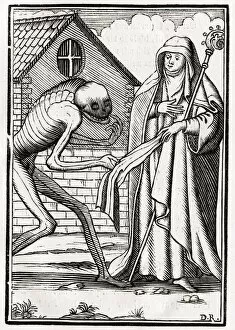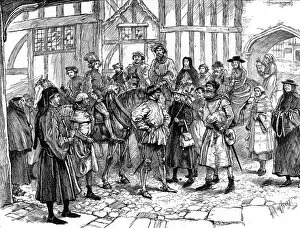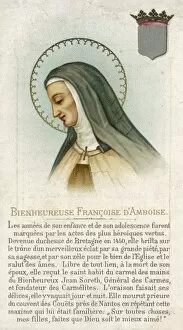Prioress Collection (#2)
"The Prioress: A Journey through Art and Literature" Embark on a captivating journey as we delve into the enigmatic world of the prioress
For sale as Licensed Images
Choose your image, Select your licence and Download the media
"The Prioress: A Journey through Art and Literature" Embark on a captivating journey as we delve into the enigmatic world of the prioress. From Chaucer's Canterbury Pilgrims on the road to exquisite artworks depicting religious figures, this caption explores various representations of this intriguing character. In Geoffrey Chaucer's Canterbury Tales, The Prioress stands out among the diverse group of pilgrims. Her delicate manners and elegant attire reflect her high social status within the church hierarchy. But what lies beneath her serene facade? Moving beyond literature, we encounter The Communion of Saint Theresa of Avila, circa 1670. This painting captures a moment of spiritual ecstasy experienced by Saint Theresa, perhaps mirroring the innermost desires hidden within our mysterious prioress. A striking portrait titled Portrait of Mother Jeronima de la Fuente, 1620 (oil on canvas) offers us a glimpse into another prioress' life. With an air of authority and wisdom in her eyes, she commands respect and admiration from those around her. The Wedding Feast of Saint Elizabeth of Hungary and Louis of Thuringia in the Wartburg takes us back to medieval times with its vivid depiction painted between 1490-1495 (oil on panel). Amidst celebrations and joyous festivities, our prioress might have found solace or longing for such earthly pleasures forbidden by her vows. As we explore further into art history, Lamentation over the dead Christ presents a poignant scene from 1360-65 circa (tempera on wood). Could it be that our prioress finds solace in contemplating Christ's suffering? Or does she empathize with Mary's grief? For a new mass depicted in an oil-on-canvas artwork from 1894 showcases how traditions evolve over time while still maintaining their essence. Our ever-evolving prioress may find herself torn between upholding tradition and embracing change.








